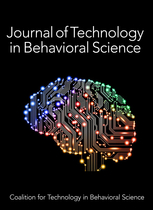The Coalition for Technology in Behavioral Science (CTiBS) in mid-2014 formed a Competencies Task Force to identify Telebehavioral health (TBH) competencies. Task force members included interprofessionally-minded TBH authorities with notable TBH experience and scholarship. Members had faculty, regulatory, training, or policy experience. To assure the relevance of identified competencies, two drafts of the competencies were made available for comment to the broad interprofessional community that comprise the behavioral world, prior to finalizing the competencies in 2017.
TBH is an accepted practice for the delivery of behavioral health services. The term “telebehavioral health” in this article included “telemental health” and “e-therapy.” The evidence-base supports TBH as an effective mode of treatment for a variety of presenting problems, with outcomes comparable to services provided in person when the setting is appropriately controlled.
Two papers have been published in the Journal for Technology in Behavioral Science (JTiBS) from this effort to date. Another paper is in the works. The first paper is entitled, “Telebehavioral Health, Telemental Health, e-Therapy and e-Health Competencies: the Need for an Interprofessional Framework,” .and establishes the case for telebehavioral health competencies.
The second JTiBS paper is entitled “An Interprofessional Framework for Telebehavioral Health Competencies” and presents a telebehavioral health competency framework and describes seven competency domains and five subdomains according to three competency levels (i.e., novice, proficient or authority). In turn, each competency level is categorized into 51 discrete telebehavioral objectives for the practitioner and other stakeholders. These objectives are further delineated into 149 cumulative and measurable telebehavioral practices to be considered by all involved parties.
The seven TBH competency domains are: 1) Clinical Evaluation and Care, with subdomains addressing Cultural Competence and Diversity, Documentation and Administrative Procedures; 2) Virtual Environment & Telepresence; 3) Technology; 4) Legal & Regulatory Issues; 5) Evidence-Based & Ethical Practice, with a subdomain addressing Social Media; 6) Mobile Health and Apps and 7) Telepractice Development.
To assist both the learner and faculty member or trainer, the article discusses and gives examples of the knowledge, skills and attitudes involved in two of the TBH competency subdomains. The first discusses how to clinically evaluate client/patient appropriateness for TBH services, and is found in the Clinical Evaluation and Care domain. The second discusses how to adhere to relevant laws and regulations, as found in the Legal and Regulatory Issues domain.
